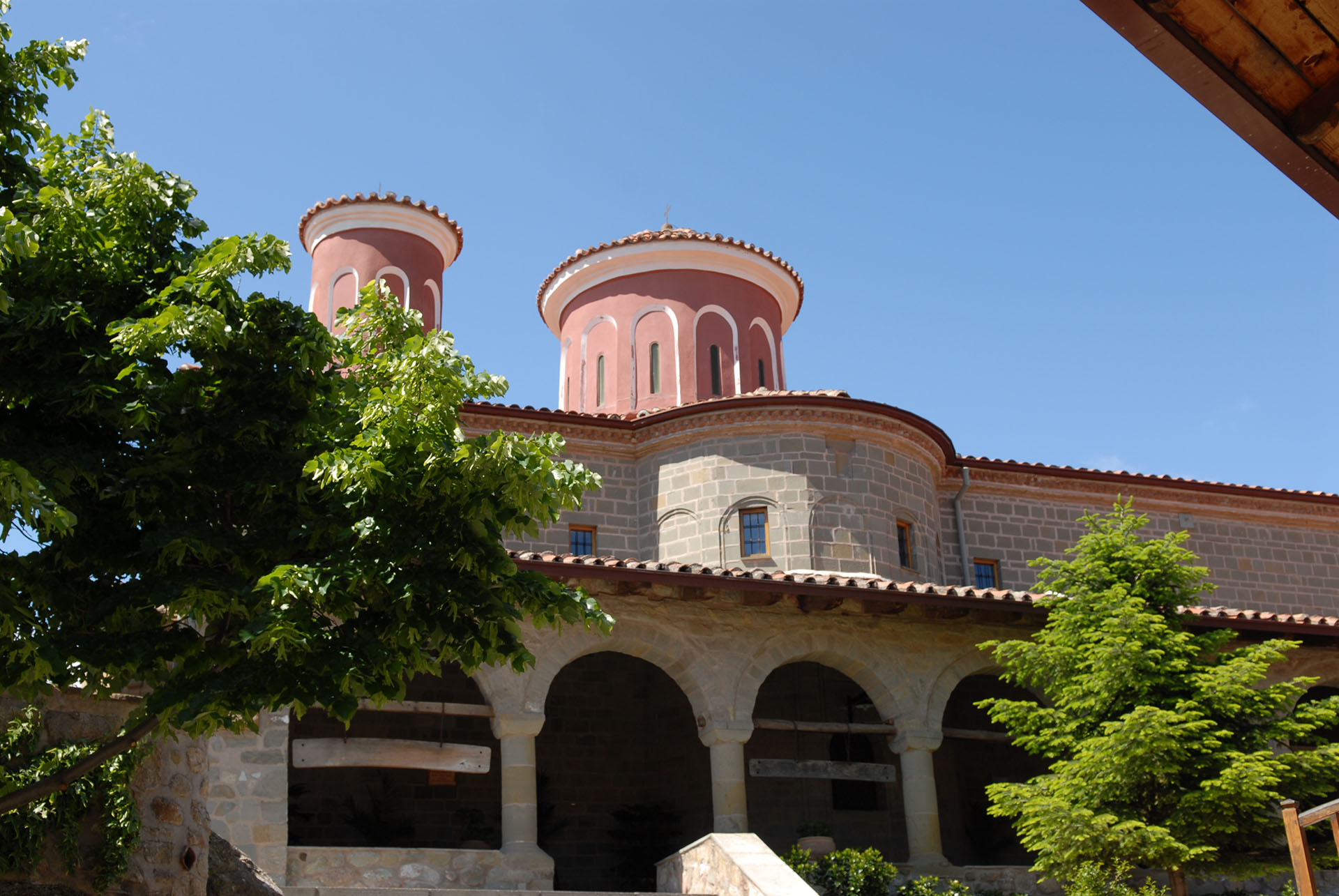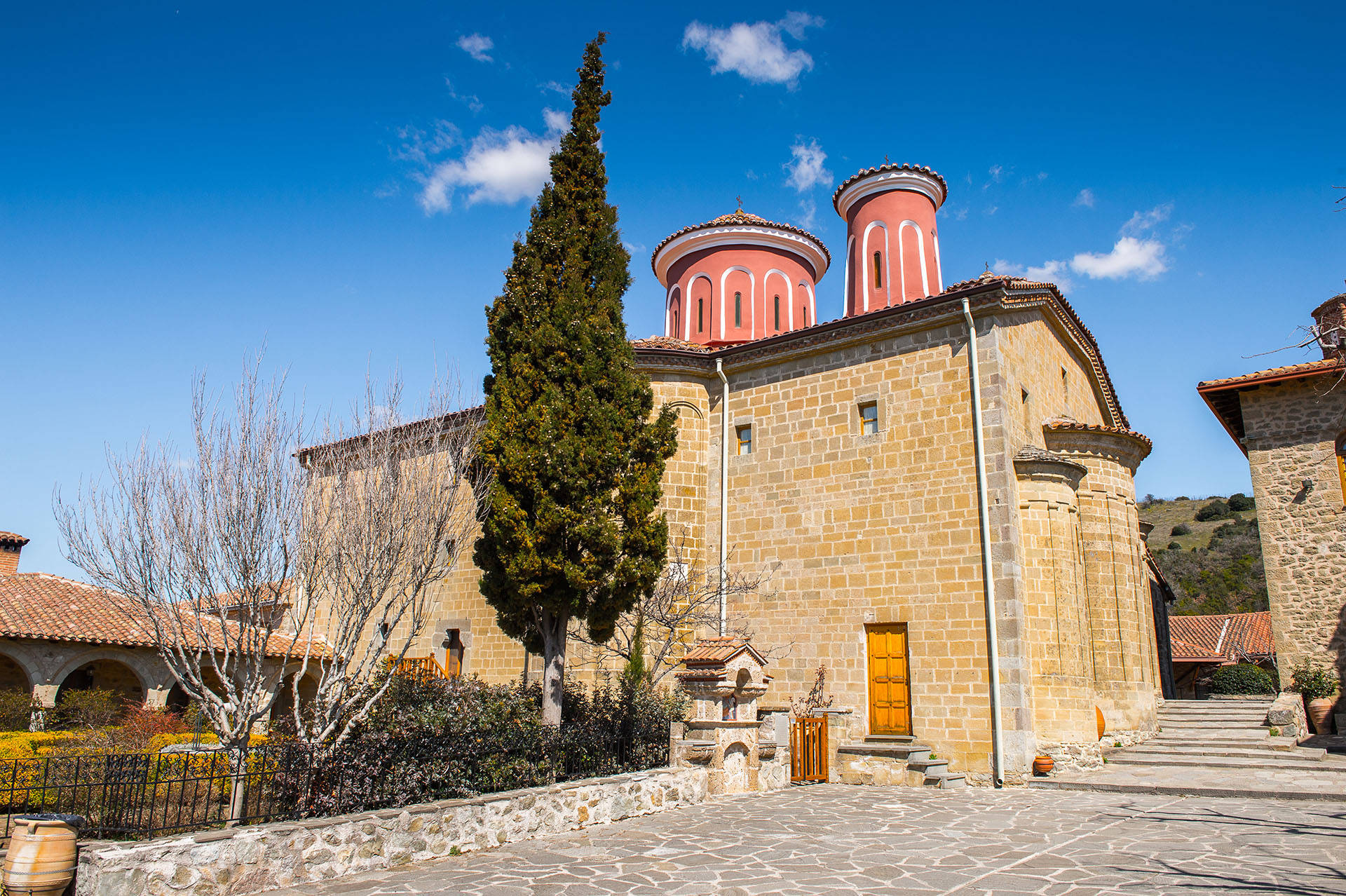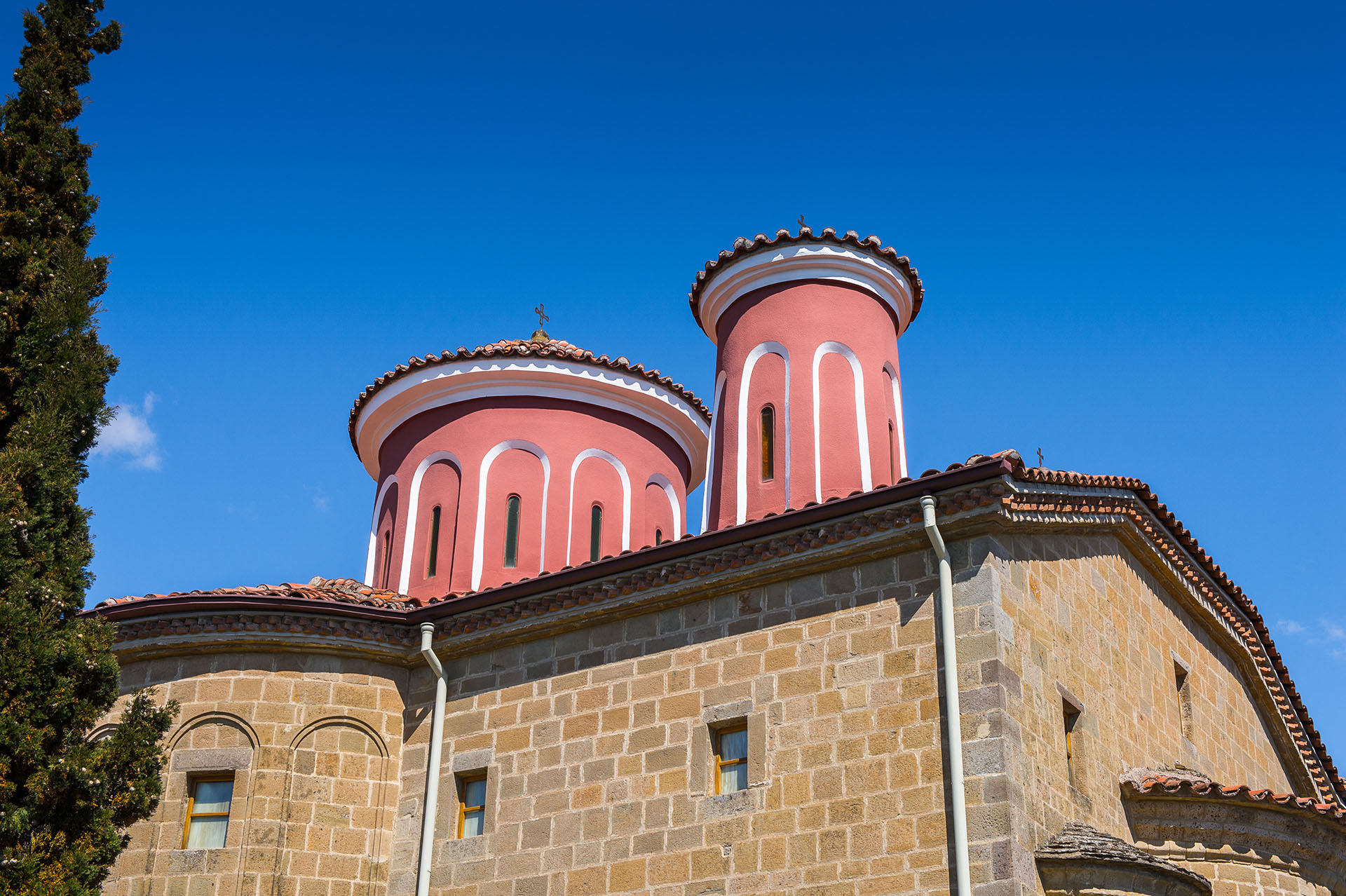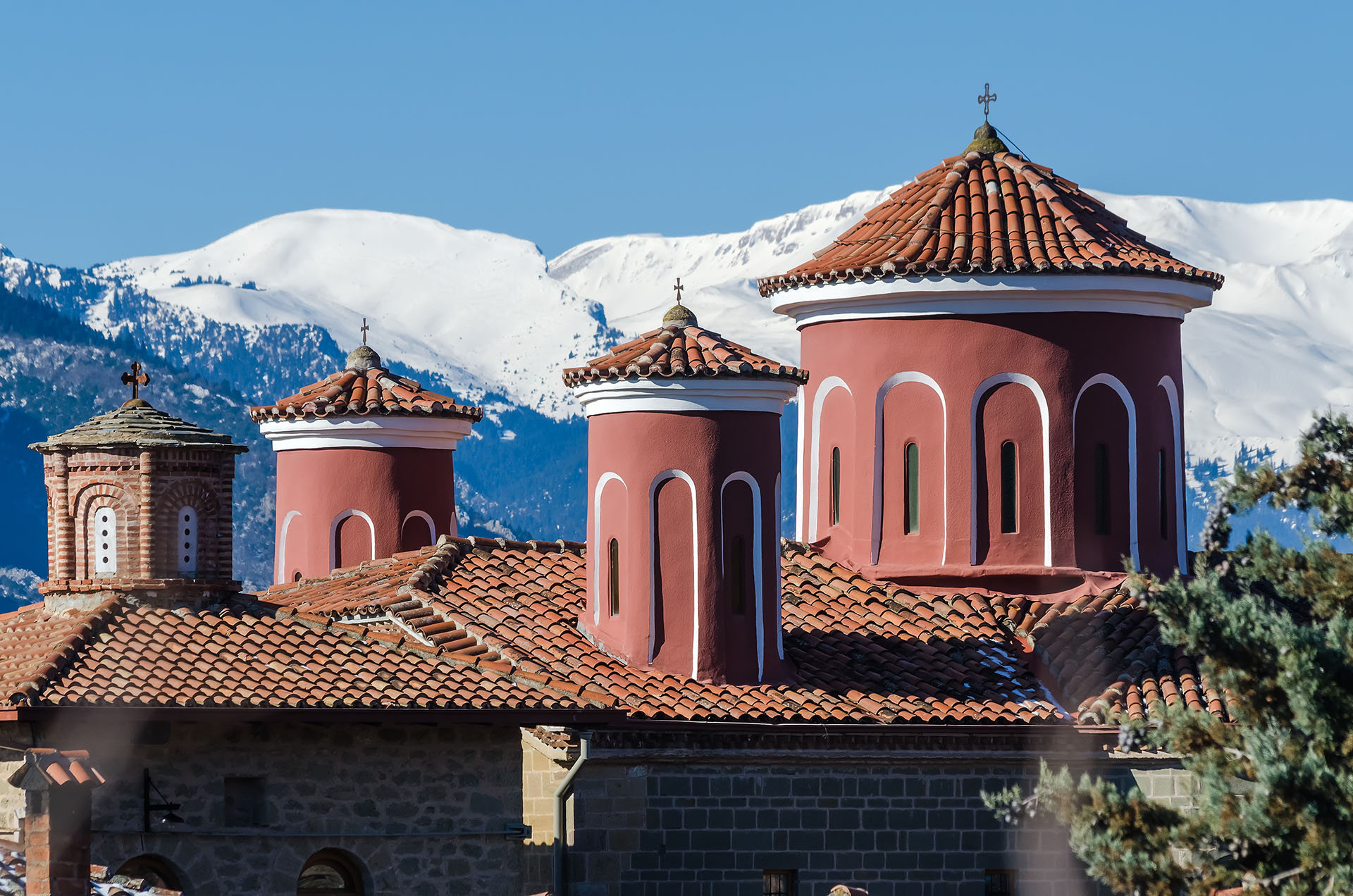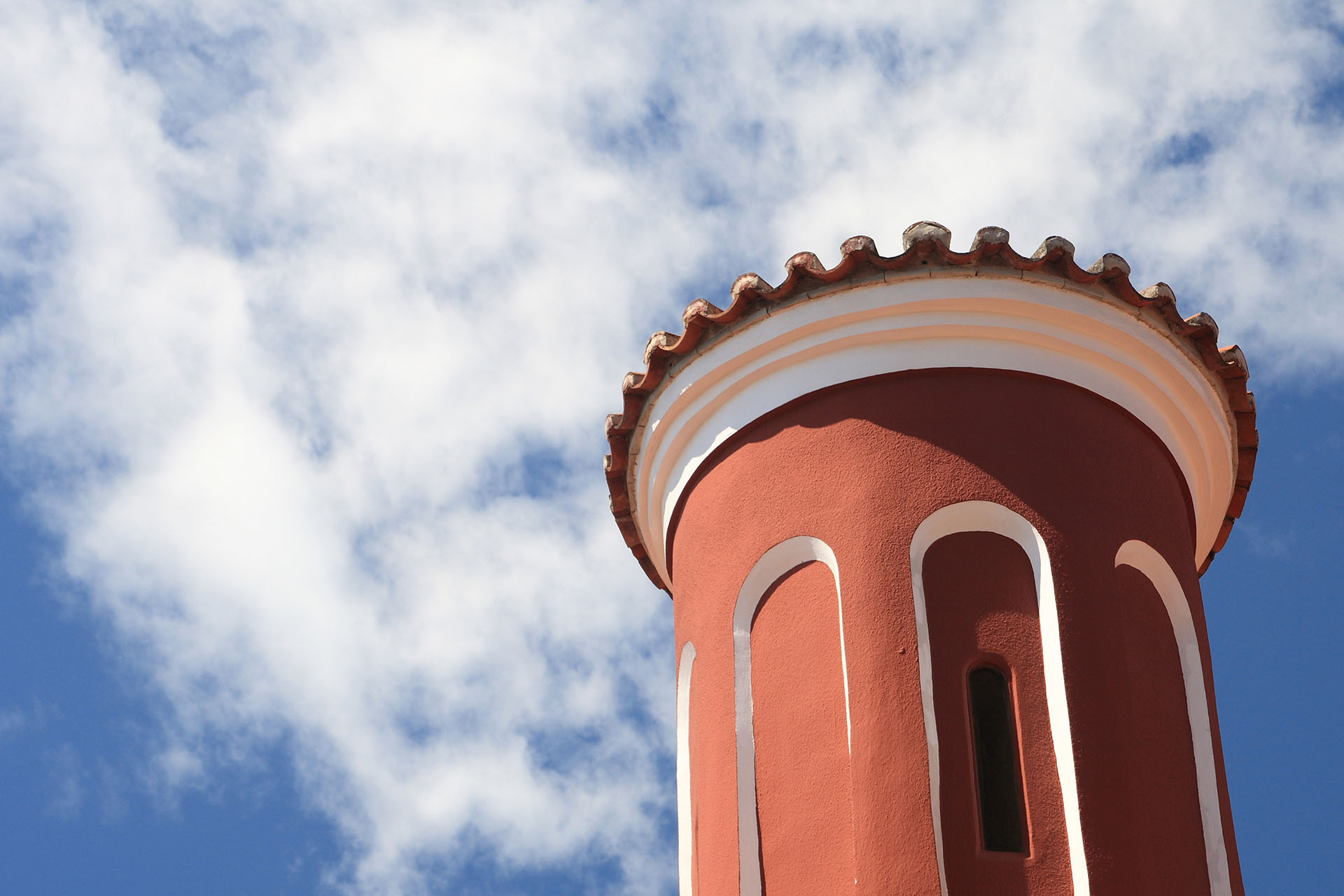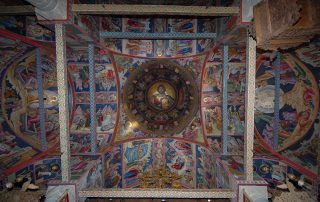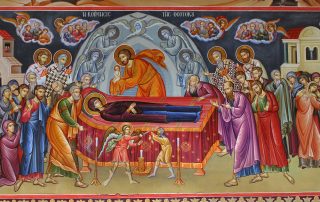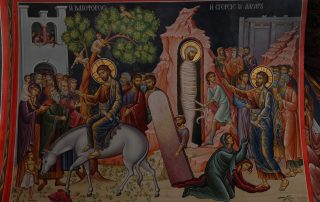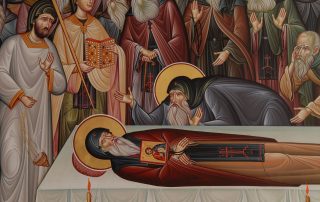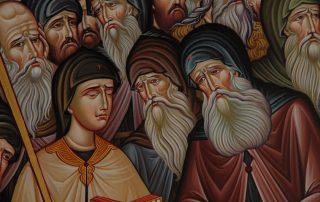Saint Charalambos’ Katholikon
In 1798 when Paisios Kleinovitis was the bishop of Stagoi (12 May 1784-1808) and when Amvrosios was the superior of the monastery, the present very imposing katholikon was built in honour of St. Charalampos whose skull is kept as a holy treasure, a priceless gift from the sovereign of Vlachia Vladislav and the relative of the great vornic Dragomit.
The new katholikon of the monastery imitates the architectural style of Mount Athos. The main church is inscribed, cruciform, four columned with two lateral conches to the right and left, the choirs; an ample esonarthex-lite precedes which has four columns in the center to support its roof. Remarkable and impressing are the high and narrow domes, the central one (which is the largest) of the nave and two smaller of the sanctuary over the offertory and the diaconical. On the north outer side of the Church wall there is the addition of an arehed colonnade-exonarthex which according to the inscription was built when Theophanis was superior, who succeeded Amvrosios, at the beginning of the 19th century.
An exquisite work of woodcarving, with elaborated vignettes and admirable combinations of birds, animals and human figures, is the iconostasis of the modern katholikon (St. Charalampos), which was carved in 1814 by Costas and Dimitris from Metsovo, at the expenses of the bishop of Stagoi Gabriel during the abbacy of Theophanis. The whole work costed 1000 grossia. Of the same artistic execution are the woodcarved box on the Altar, the four prie-dieux, the throne of the Abbot in the nave and four elegant elaborately decorated prie-dieux in the life (esonarthex) made in 1836 during the abbacy of Ierotheos.
Saint Charalambos’ Katholikon had no old wall paintings except for the Pantokrator (the Lord of the Universe), which was destroyed in 1945 together with the cupola. The today’s sisterhood after the approval by the Head of the Department of Byzantine and Post-byzantine Antiquities of the Ministry of Culture, and after the positive consultatory response by the Central Archaeological Council, it started the iconography of the Katholikon in 1992. This was entrusted to the talented Korinthian painter-mosaic maker- iconographer Vlasios Tsotsonis and his cooperators. The wall painting task is still continued. The iconographer is painting the Katholikon by faithfully following the tradition and the standard models of the Cretan School of Art, which prevailed in the area. He is working with an amazing artistic and composing ability and great competence of expression, so that the new paintings are indeed equally worthy and admirable as the old ones.


